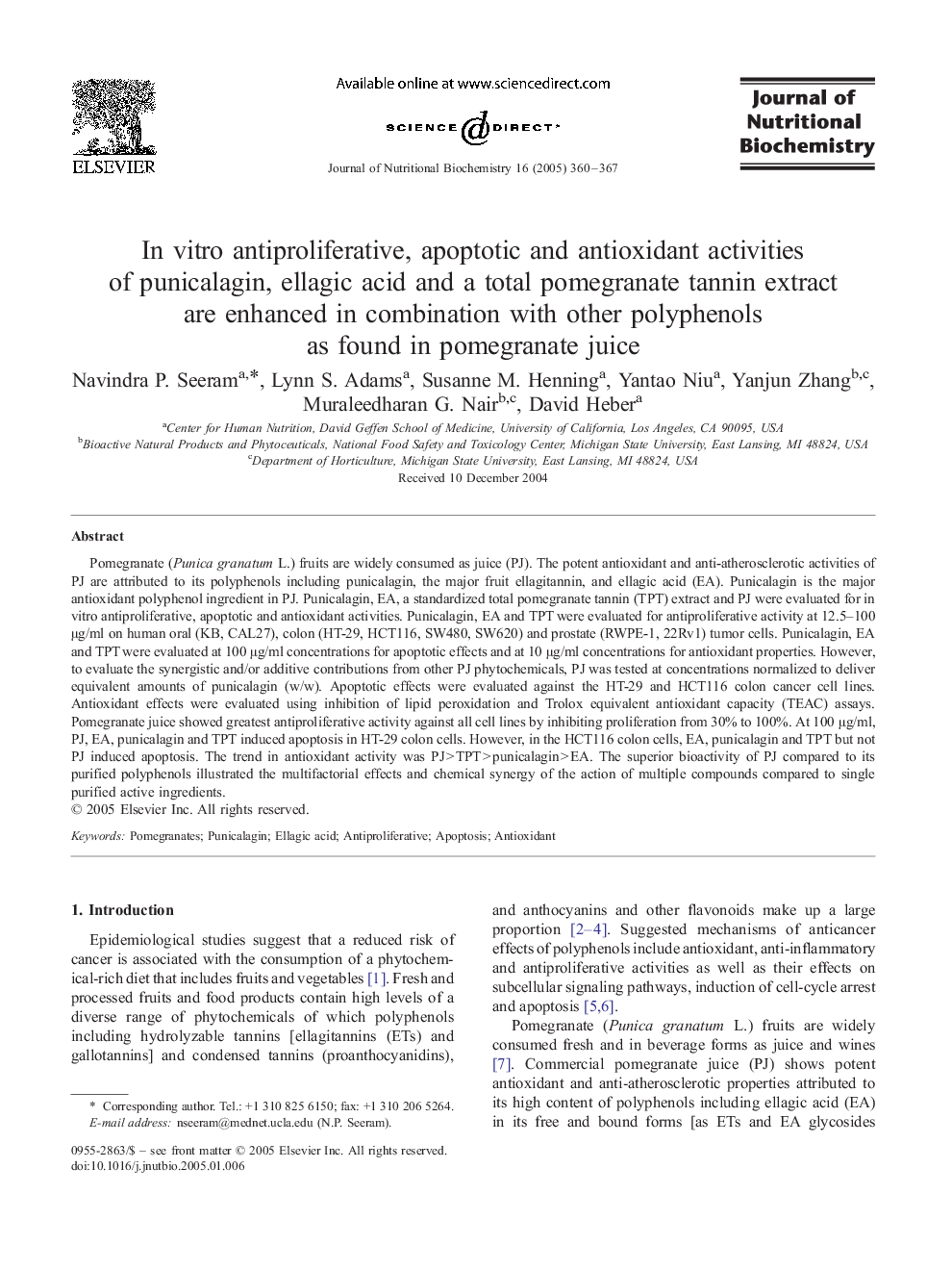| Article ID | Journal | Published Year | Pages | File Type |
|---|---|---|---|---|
| 9891564 | The Journal of Nutritional Biochemistry | 2005 | 8 Pages |
Abstract
Pomegranate (Punica granatum L.) fruits are widely consumed as juice (PJ). The potent antioxidant and anti-atherosclerotic activities of PJ are attributed to its polyphenols including punicalagin, the major fruit ellagitannin, and ellagic acid (EA). Punicalagin is the major antioxidant polyphenol ingredient in PJ. Punicalagin, EA, a standardized total pomegranate tannin (TPT) extract and PJ were evaluated for in vitro antiproliferative, apoptotic and antioxidant activities. Punicalagin, EA and TPT were evaluated for antiproliferative activity at 12.5-100 μg/ml on human oral (KB, CAL27), colon (HT-29, HCT116, SW480, SW620) and prostate (RWPE-1, 22Rv1) tumor cells. Punicalagin, EA and TPT were evaluated at 100 μg/ml concentrations for apoptotic effects and at 10 μg/ml concentrations for antioxidant properties. However, to evaluate the synergistic and/or additive contributions from other PJ phytochemicals, PJ was tested at concentrations normalized to deliver equivalent amounts of punicalagin (w/w). Apoptotic effects were evaluated against the HT-29 and HCT116 colon cancer cell lines. Antioxidant effects were evaluated using inhibition of lipid peroxidation and Trolox equivalent antioxidant capacity (TEAC) assays. Pomegranate juice showed greatest antiproliferative activity against all cell lines by inhibiting proliferation from 30% to 100%. At 100 μg/ml, PJ, EA, punicalagin and TPT induced apoptosis in HT-29 colon cells. However, in the HCT116 colon cells, EA, punicalagin and TPT but not PJ induced apoptosis. The trend in antioxidant activity was PJ>TPT>punicalagin>EA. The superior bioactivity of PJ compared to its purified polyphenols illustrated the multifactorial effects and chemical synergy of the action of multiple compounds compared to single purified active ingredients.
Related Topics
Life Sciences
Biochemistry, Genetics and Molecular Biology
Biochemistry
Authors
Navindra P. Seeram, Lynn S. Adams, Susanne M. Henning, Yantao Niu, Yanjun Zhang, Muraleedharan G. Nair, David Heber,
